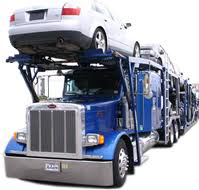
The Porsche Cayman has evoked a distinctly mixed response from car buyers ever since it was first released in 2005. Those who like the car have lauded it as a terrific sports coupe at a great price, while those who do not, have tended to dismiss it somewhat derisively as a poor man’s Porsche.
German automaker Volkswagen, which owns Porsche these days, has attempted to put an end to that debate once and for all with its new Porsche Cayman 2013. The latest model is bigger, faster and more powerful than its two predecessors. Automobile critics have given the car a resounding thumbs up for its style, handling and overall value.
Larger, Faster, More Powerful
The 2013 model has a slightly longer wheelbase compared to the previous model. From stem to stern, the car measures 14 feet and 4.4 inches, or about 1.3 inches longer than the older model. The chassis itself has been completely redesigned and features a blend of high-strength steel and milder strength steel with all-aluminum doors, floors, tailgate and bonnet. The new materials have made the body considerably stronger while also making the car lighter by as much as 66 pounds. The wheelbase on the new Cayman has been stretched out by 2.36 inches while the roof has been lowered marginally to give the car a sleek, muscular look overall.
Under the Hood
Not much has changed under the hood with the 2013 Porsche Cayman. Like its predecessors, the new Porsche Cayman too offers a choice of two flat-six, quad-cam engines. One is a 2.7-liter version with 271bhp (brake horse power), while the other option is a 3.4-liter 321bhp engine. Both engine models are available with either a six-speed manual transmission or a seven-speed Porsche dual-clutch (PDK) transmission. The twin-clutch configuration costs about $2,500 more than the manual transmission and is about 70 pounds heavier as well.
The 2.7-liter engine in the new Cayman is slightly smaller than the 2.9-liter engine installed in the two previous versions of the car. It also offers noticeably less performance than the 3.5-liter engine. Even so, the 2.7-liter engine delivers more torque and power than the previous 2.9-liter engine and claims an acceleration of 0 to 62 miles per hour in 5.7 seconds. Critics have lauded the car for handling exceptionally well at high speeds, especially on curves, The new Porsche Cayman has also received an enthusiastic thumbs-up for its hydraulic assisted steering and super-responsive braking system.
More Spacious Interior
The interior cabin of the Porsche Cayman 2013 is larger than previous models as a result of the larger wheelbase. However, there is little else to really distinguish it from previous models otherwise. As with the older models, the 2013 Porsche Cayman too features a central tachometer that is flanked by other gauges. The center console provides access to several buttons for controlling a variety of features including an optional sports exhaust, active damping and an optional sports setting for the transmission and engine. Other options include electronically assisted steering and a adaptive cruise control feature that is designed to automatically keep the car a safe distance away from vehicles in front of it when travelling at highway speeds.
The new Porsche starts at a cool $48,500 and goes all the way up to $64,000 with all the bells and whistles. Comparable cars in its class include the costlier Jaguar F-type, the Mercedes-Benz SLK and, to a certain extent, the BMW Z4.


